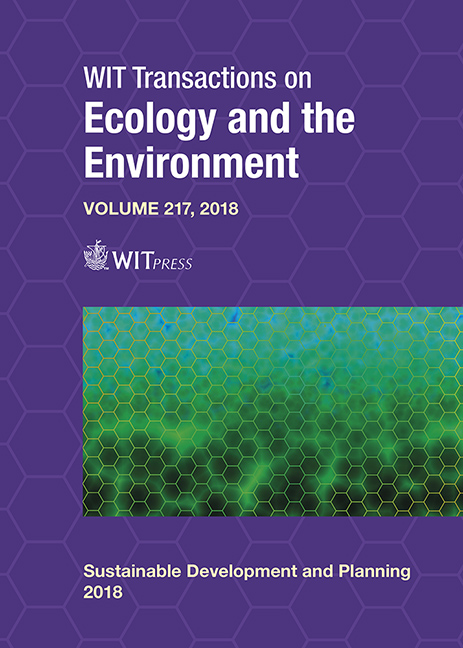SOCIAL NETWORKS, AWARENESS AND BEHAVIORAL MODIFICATION TO REDUCE AIR POLLUTION AND CARBON FOOTPRINTS: THE CLAIRCITY PROJECT IN THE LIGURIA REGION OF ITALY
Price
Free (open access)
Transaction
Volume
217
Pages
13
Page Range
73 - 85
Published
2018
Size
472 kb
Paper DOI
10.2495/SDP180071
Copyright
WIT Press
Author(s)
CARLO TROZZI, RITA VACCARO, MARTINA TROZZI
Abstract
The paper discusses the use of social media (Facebook, Twitter and Instagram) to promote the activities of the ClairCity project in Genova area and to increase awareness and induce behavioral modification to reduce air pollution and carbon footprint. The activities are implemented in the frame of Horizon 2020 Project ClairCity, a four year project (2016–2020) working directly with citizens and local authorities in six countries around Europe. From the adoption of the Kyoto Protocol to the United Nations Framework Convention on Climate Change, great attention has been devoted to reducing carbon dioxide and other greenhouse gases emissions at the international level and specific initiatives at city level have been launched. At the same time despite continued efforts to reduce emissions of harmful air pollutants, air pollution remains a worldwide concern, including in large areas of Europe, particularly in cities where the effects on human health are the major concerns. The project start from the consideration that city citizens’ behaviour and day-to-day activities are crucial element to modify to achieve the goal of reducing air pollution. To promote ClairCity across a broad range of residents in each partner city and beyond, a suite of social media tools are running. Particular attention is devoted to the use of local Facebook groups to disseminate the information. Analytic instruments are used to evaluate the penetration of the information between the local population while results on direct participation of citizens to surveys and meetings are used to evaluate the follow up of the social media actions. The conclusion is that, while a traditional use of social networks is useful to spread the results of the project between the scientific community and the technicians involved in the work, the population is hardly made aware. To increase awareness, it is necessary to bring communication where the population is most easily reachable. To this end, an activity aimed at Facebook groups that are of local interest and are directly managed by citizens is an important tool for spreading project ideas and involving non-professional people.
Keywords
ClairCity project, social media, air pollution, emissions, carbon footprint





